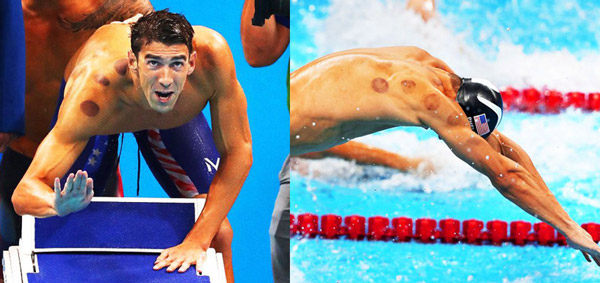Your cart is currently empty!
History of Cupping
Overview
The art of cupping developed over time from the original use of hollowed animal horns to drain toxins out of snakebites and skin pustules. Horns evolved into bamboo cups, which were eventually replaced by glass. Therapeutic applications evolved with the refinement of the cup itself and with the cultures that employed cupping as a health care technique.
History
Chinese
Animal horns were hollowed out and a small hole made that allowed the air to be sucked out. The resulting vacuum would draw toxins to the surface. Cupping began to be used in surgery to divert blood flow from the open site. The true origin of cupping remains in obscurity.
Cupping grew into a separate therapy with healers treating a variety of conditions. Traditional Chinese Medicine observes that cupping dispels stagnation of blood and Chi, along with external pathogenic factors that invade a weakened constitution. A depleted constitution is often the result of depleted “Jing Chi” or original essence. This will often progress to a weakened “Wei Chi” or defense (immune system).
Early written records in China date from 28 A.D. A traditional Chinese saying, “Acupuncture and Cupping … more than half the ills cured.”
Egyptian
In 1550 B.C., the Ebers Papyrus, an ancient medical textbook, discusses the application of cups for fever, pain, vertigo, menstruation, appetite, constipation and accelerating the “healing crisis” of disease.
From the Egyptians, cupping was introduced to the Greeks, and it eventually spread to ancient cultures of many European countries and even the Americas.
1800s – 1900s
European and American doctors still widely used cupping into the late 1800’s. Up to this time, cupping was usually “wet cups” or bleeding cups. The technique now became bloodless, yet no less effective. Research papers on the subject written in Europe during the 19th century addressed dry cupping only.
1950s
A collaborative effort between China and Russia confirmed the clinical applications of cupping therapy. Foundation of official use in Chinese hospitals.
1990s
After suffering injuries and health-related issues as a result of an accident, ACE founder Anita J. Shannon begins utilizing the ancient art of Chinese cupping therapy. Wanting to bridge the divide between ancient and modern healthcare, Anita creates the theories and techniques that form the foundation of ACE Massage Cupping and MediCupping VacuTherapies. ACE VacuTherapies is created, which combines ancient Chinese cupping techniques with modern medical massage therapy.
2001
Anita J. Shannon establishes Advanced Continuing Education, an NCBTMB CEU provider. Anita has presented hundreds of workshops on ACE Massage Cupping and MediCupping therapy throughout the US and internationally since 2002. Anita has been published on the subject of cupping therapy in industry publications such as Massage Today, Massage Magazine, and Les Nouvelles Esthetiques. She has published two educational videos on ACE Massage Cupping bodywork, two on MediCupping therapy and one on TheraCupping home care, and is currently writing a book on VacuTherapies. In 2011, Anita was inducted into the Massage Therapy Hall of Fame. Anita
2015
In an initiative to reach a wider audience with the transformative power of cupping therapy, ACE launches our online learning platform ACE Institute Online. Since introducing our cupping therapy online courses, ACE has welcomed over 10,000 new students to the wonderful art of cupping therapy.
2016
Michael Phelps introduces the world to cupping therapy in a major way during his record-setting performance during the 2016 Olympic Summer Games in Rio De Janeiro, Brazil. The benefits of cupping therapy on athletes being put on the largest international stage in the world provides a huge awareness of the techniques and equipment.
